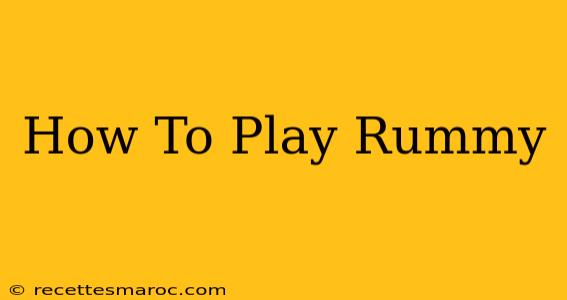Rummy, a captivating card game enjoyed by millions worldwide, blends strategy, skill, and a touch of luck. Whether you're a seasoned card player or a complete novice, understanding the rules is the key to unlocking the fun. This comprehensive guide will walk you through everything you need to know to start playing rummy like a pro.
Understanding the Basics of Rummy
Before diving into the gameplay, let's establish the fundamental elements:
-
Objective: The primary goal in rummy is to meld all your cards into sets and sequences, thereby discarding all cards in your hand. The first player to achieve this wins the round.
-
Card Values: Number cards hold their face value (Ace = 1). Face cards (Jack, Queen, King) are typically worth 10 points each.
-
Sets and Sequences: These are the building blocks of a successful rummy hand:
- Sets: Three or four cards of the same rank, but different suits (e.g., 3♥, 3♦, 3♣).
- Sequences: Three or more cards of the same suit in consecutive order (e.g., 5♥, 6♥, 7♥). A sequence can also include Ace as the lowest or highest card (e.g., A♥, 2♥, 3♥ or Q♥, K♥, A♥).
Getting Started: A Step-by-Step Guide
Here’s how a typical rummy game unfolds:
-
Dealing the Cards: Each player is dealt a specific number of cards (often 13), depending on the variant of rummy being played. The remaining cards form the stock pile.
-
The Discard Pile: One card from the stock pile is turned face up to start the discard pile. This pile allows players to pick up discarded cards.
-
Picking a Card: Each player's turn begins by picking up either the top card from the stock pile or the top card from the discard pile.
-
Arranging Your Hand: Organize your hand into potential sets and sequences. You might need to rearrange your cards throughout the game as you obtain new cards.
-
Discarding a Card: After picking a card, discard one unwanted card face up onto the discard pile.
-
Melding: Once you have formed valid sets and sequences, you can "meld" them by laying them down on the table. This signifies that you have completed your sets and sequences.
-
Going Rummy: When a player successfully melds all their cards, they declare "Rummy!" and the round ends.
-
Scoring: The scores of the remaining players are calculated by adding up the point values of their un-melded cards. This is usually subtracted from the winner's score.
Different Types of Rummy
Numerous variations of rummy exist, each with its own nuances:
-
Gin Rummy: A fast-paced variant requiring you to meld all your cards and have a minimal number of points in your hand.
-
Indian Rummy: A widely popular version in India, often involving multiple players and complex scoring systems. This typically has two types of melds, sequences and sets. Pure sequence is mandatory to win.
-
Canasta Rummy: This version utilizes two decks of cards and focuses on forming melds of seven or more cards.
-
500 Rummy: This version uses a scoring system where players earn points by melding cards, and the first player to reach 500 points loses the game.
Tips and Strategies for Mastering Rummy
-
Observe your opponents: Pay attention to the cards they discard. This provides clues about the cards they might be holding.
-
Plan your melds: Anticipate which sets and sequences you can form early in the game.
-
Manage your risk: Don't be afraid to discard high-value cards if necessary.
-
Practice: The more you play, the better you'll become at strategizing and making quick decisions.
Mastering rummy requires a blend of strategic thinking and calculated risks. This comprehensive guide will help you confidently navigate the world of rummy. So grab a deck of cards, gather your friends, and start enjoying the thrill of the game!

